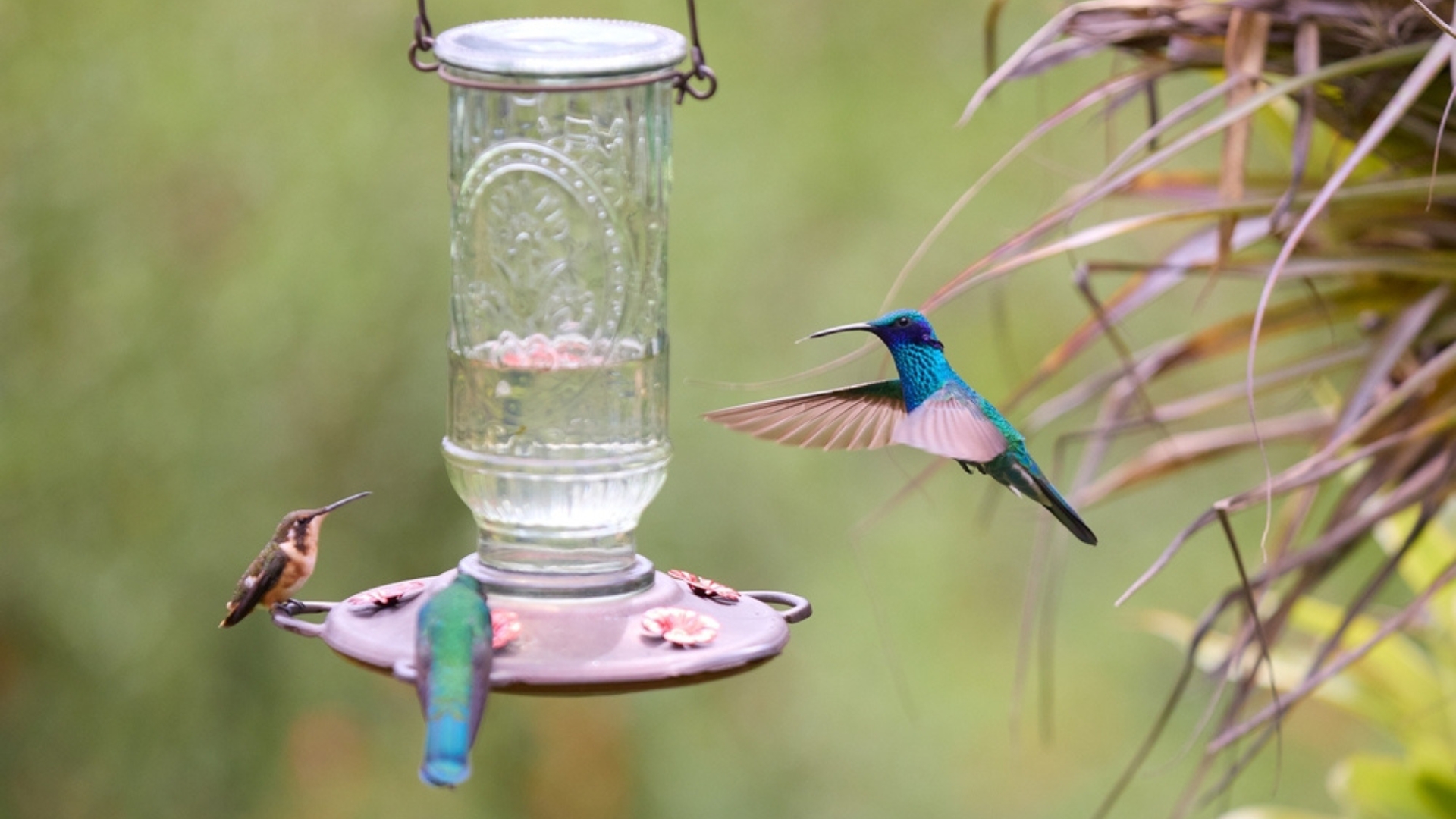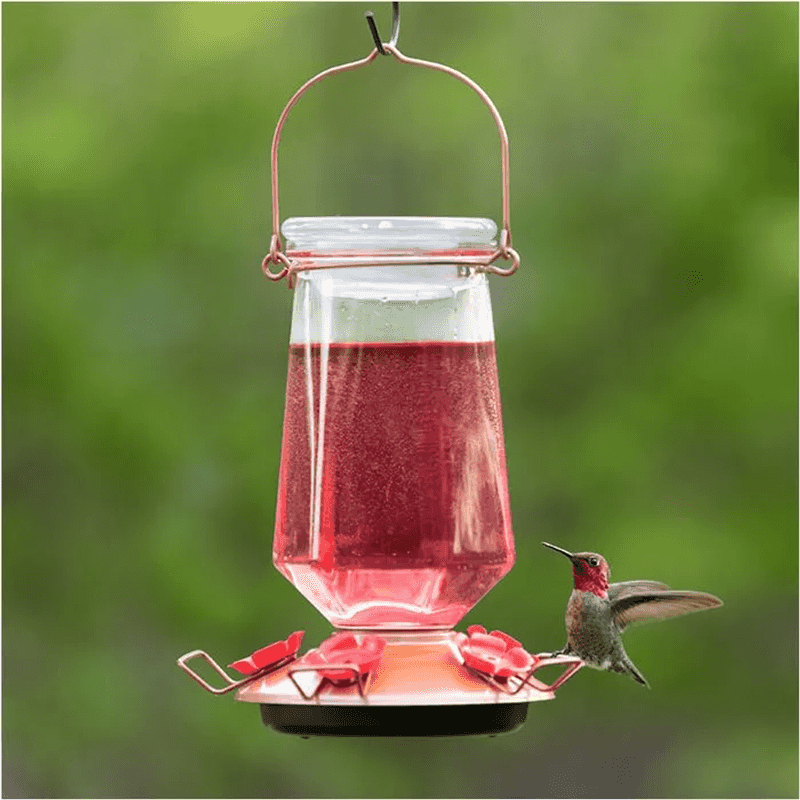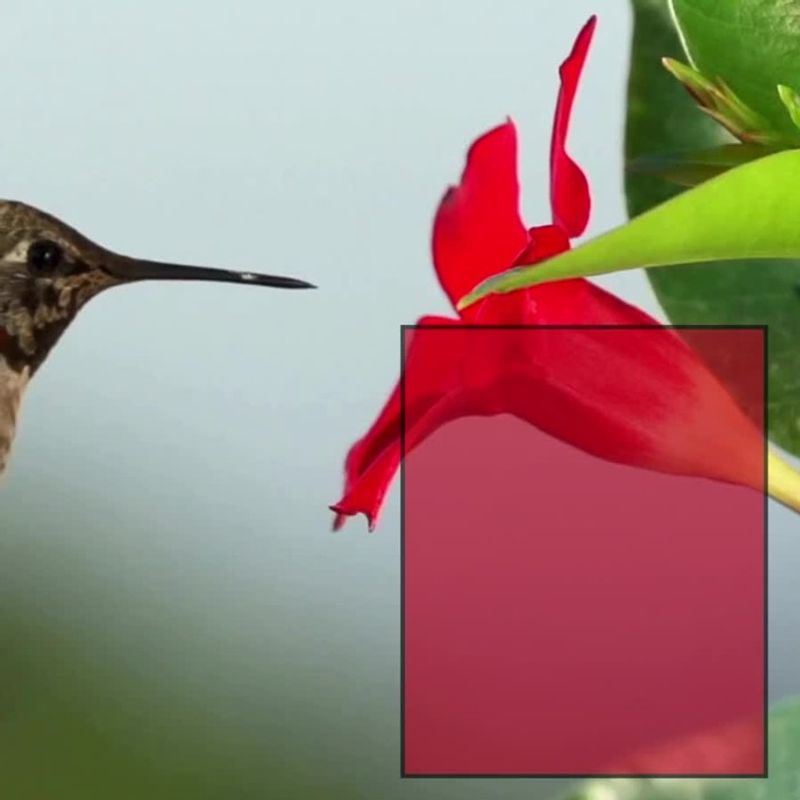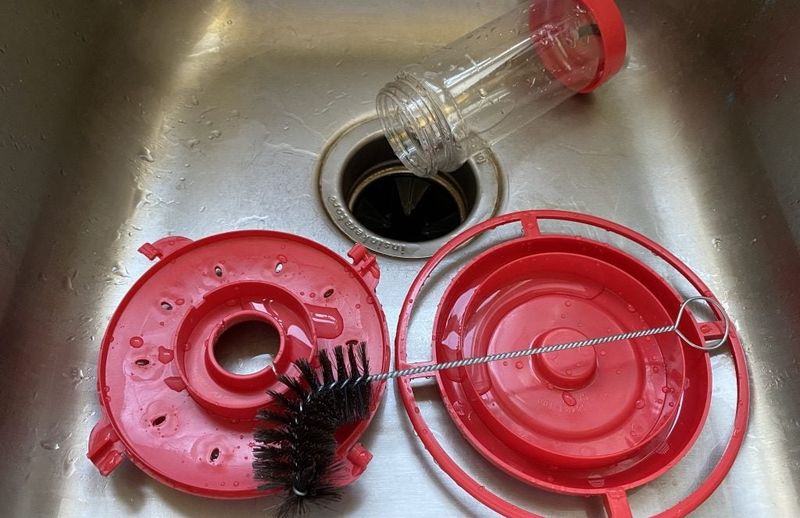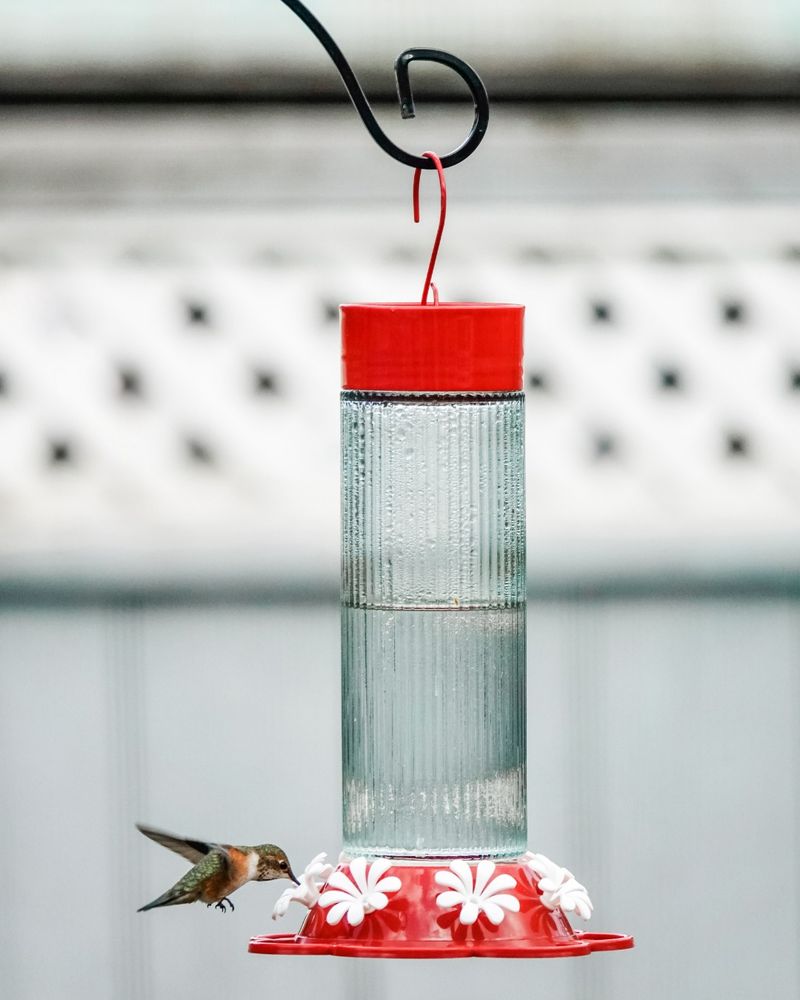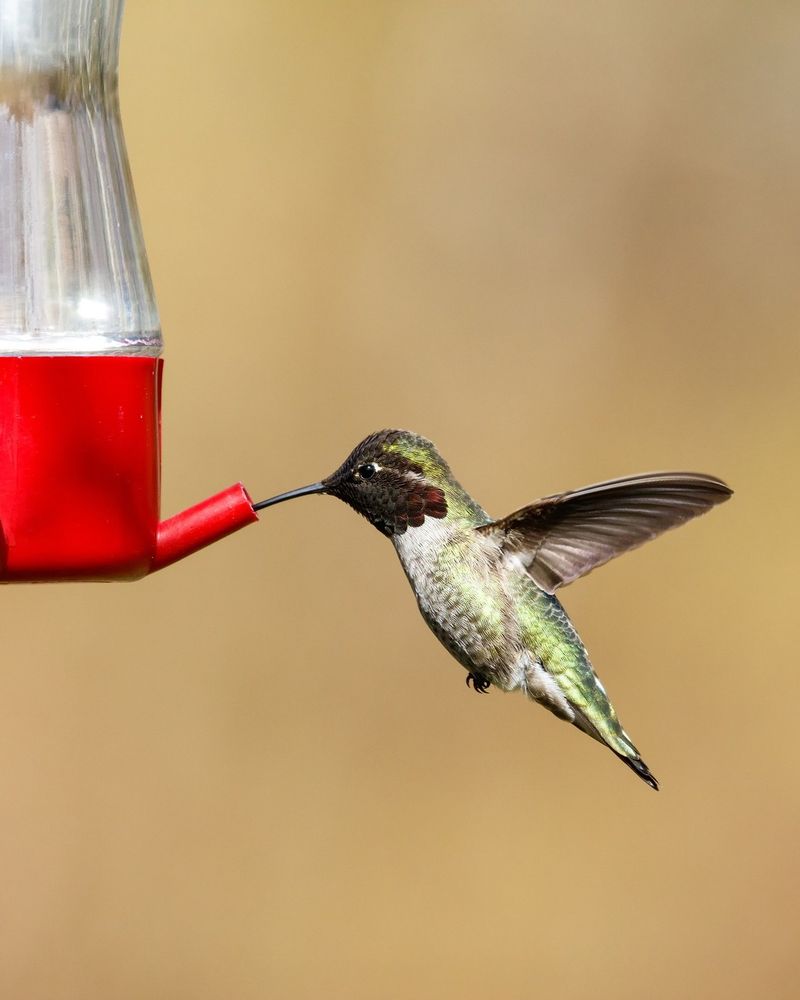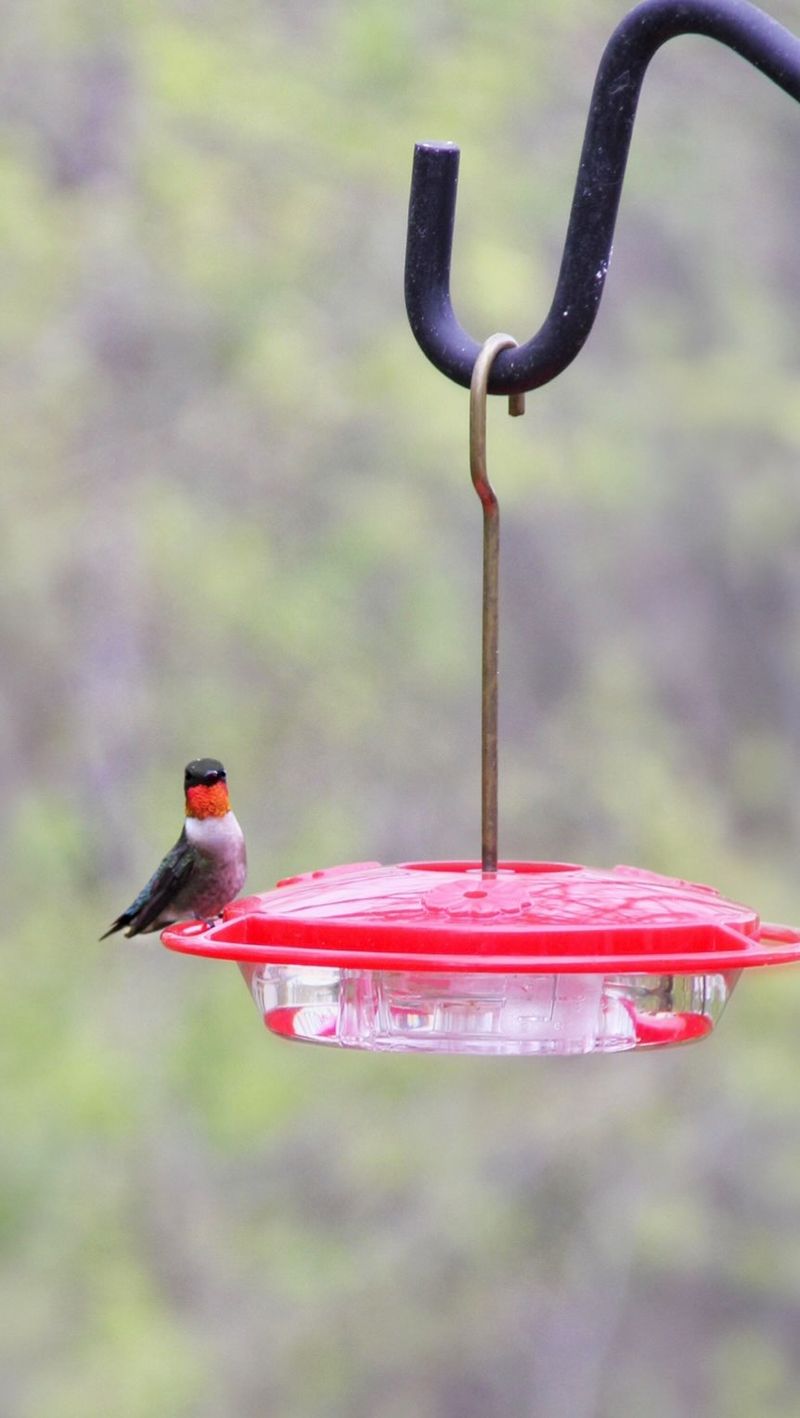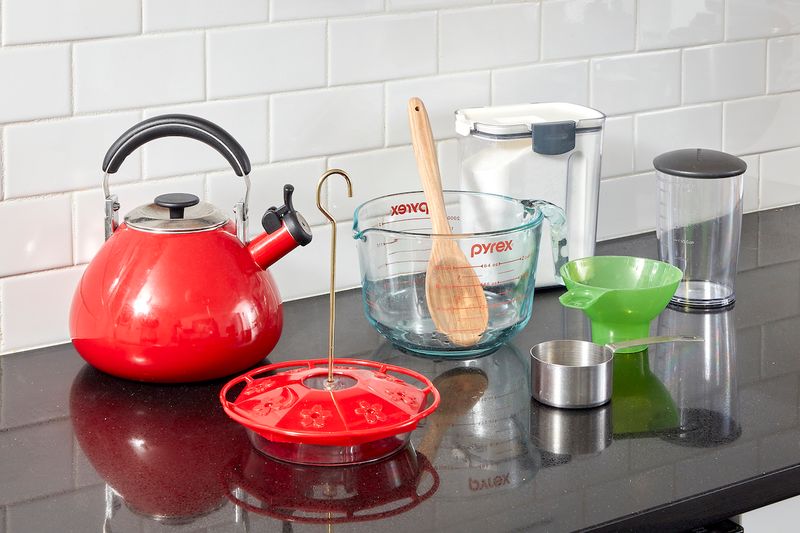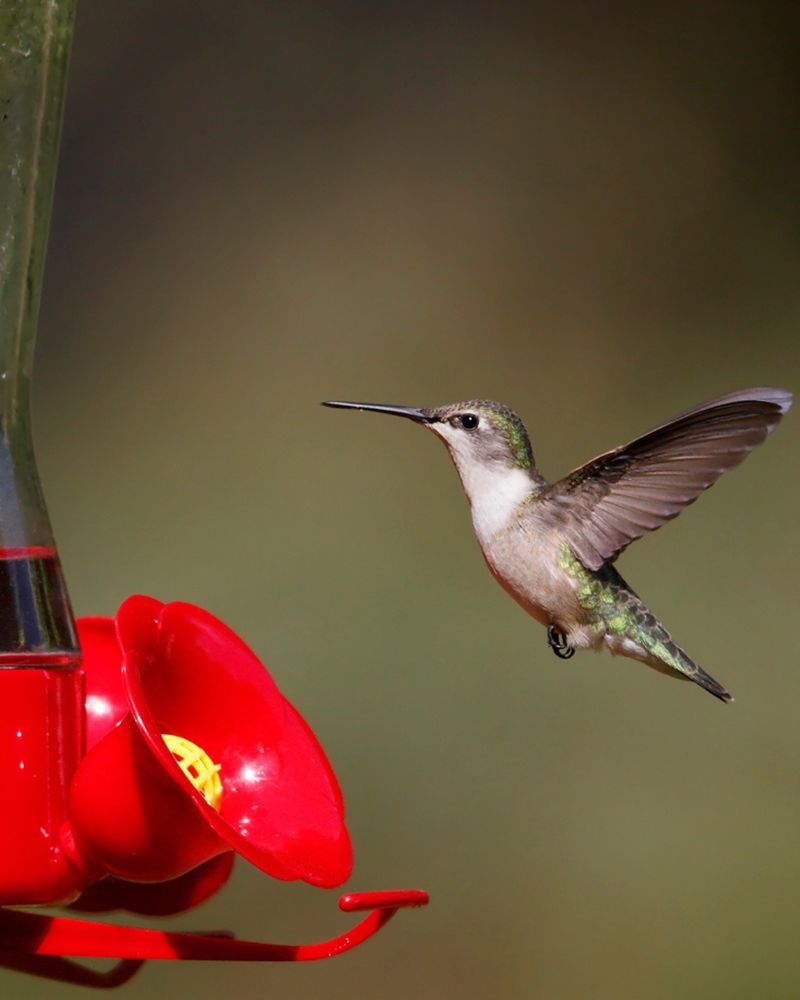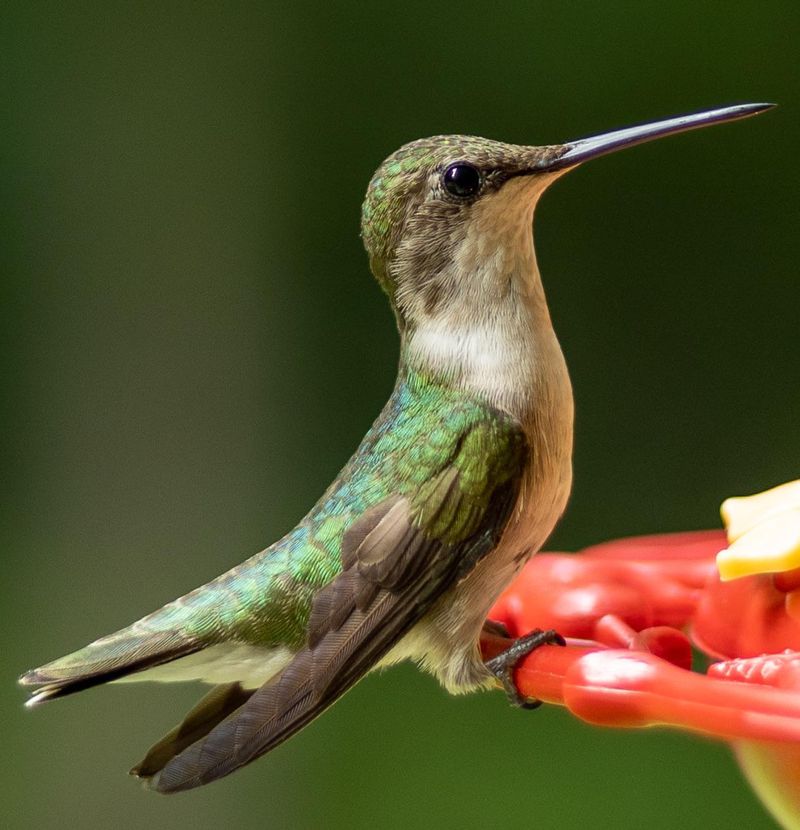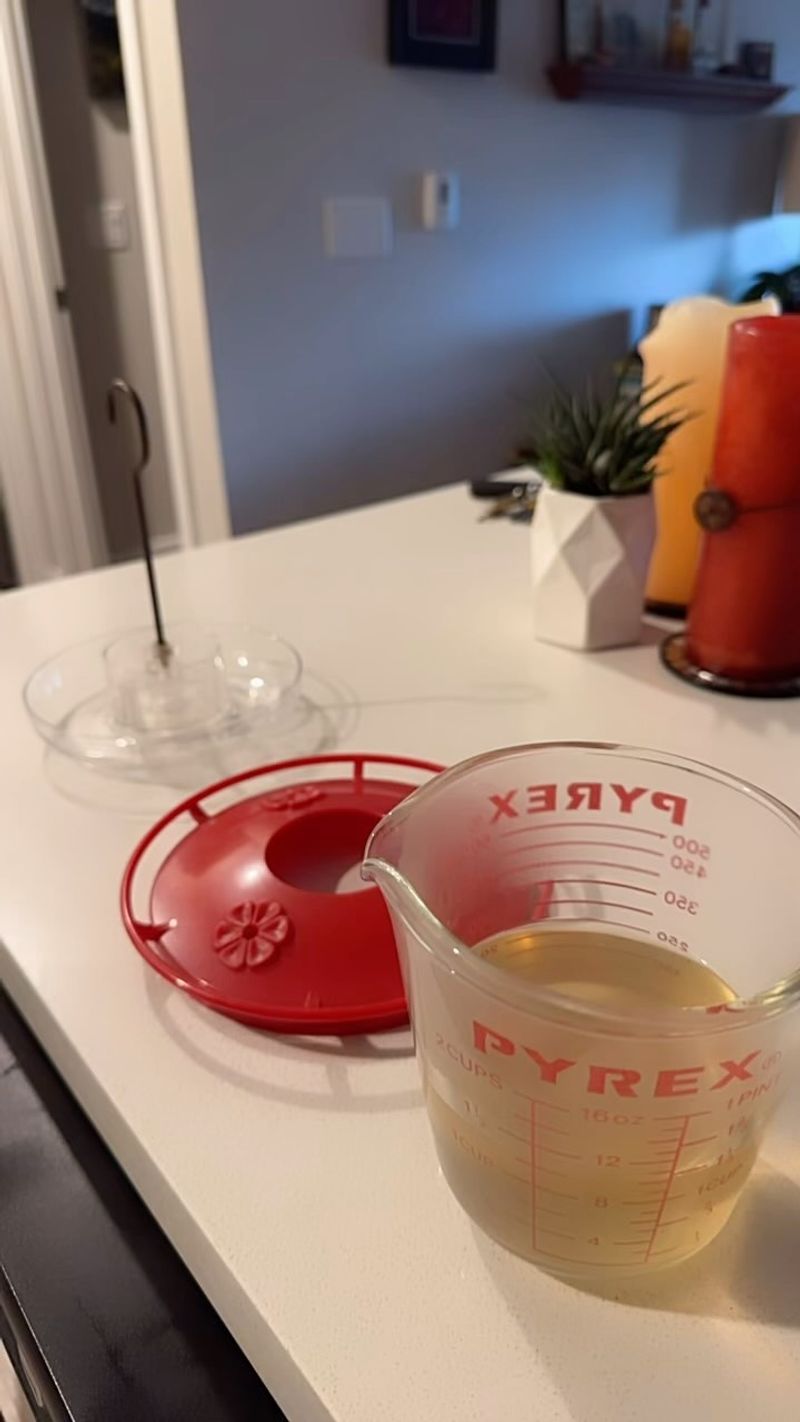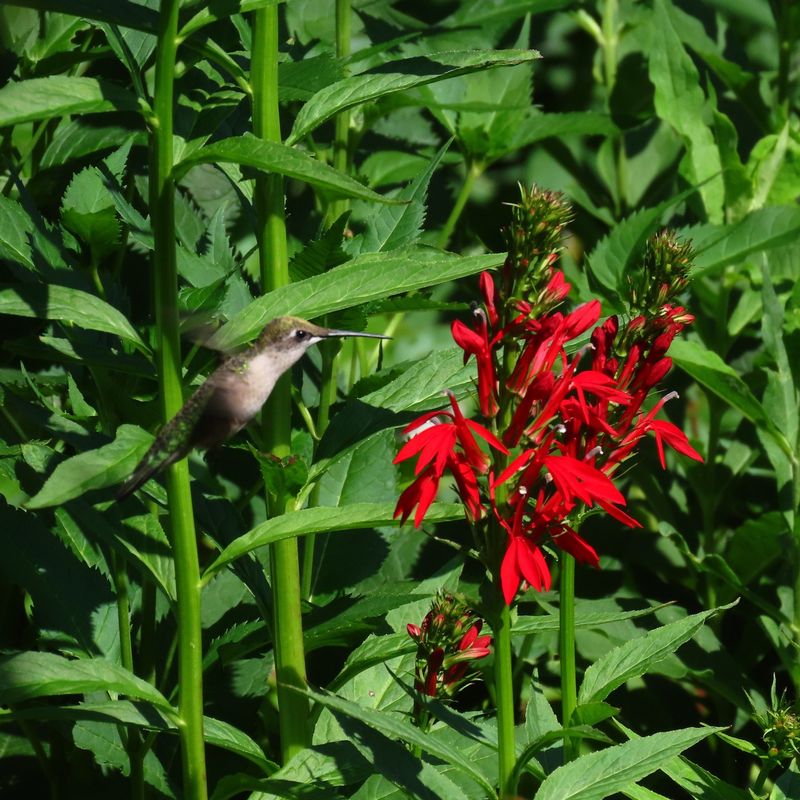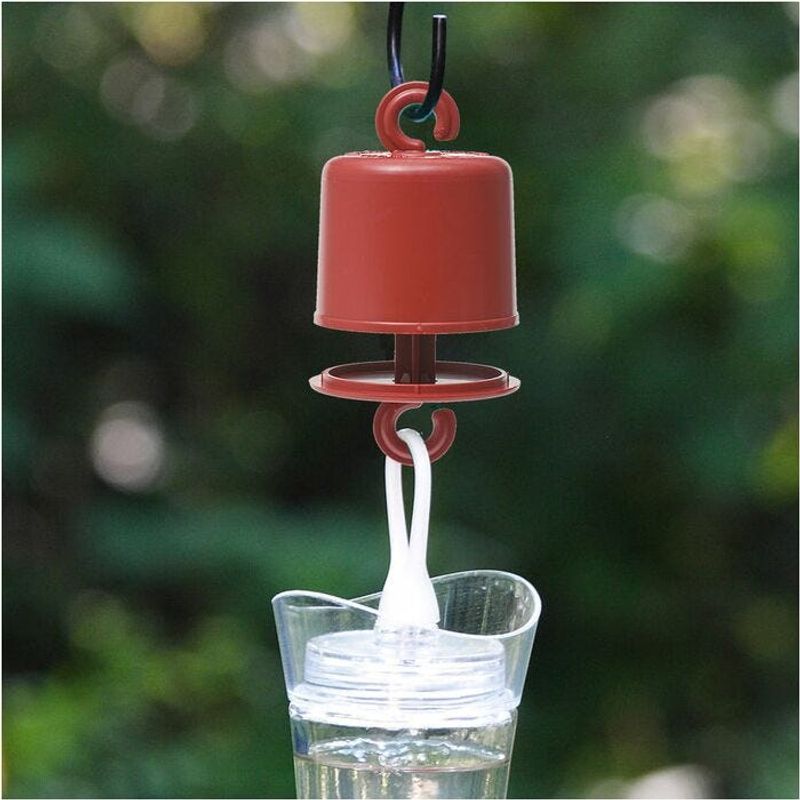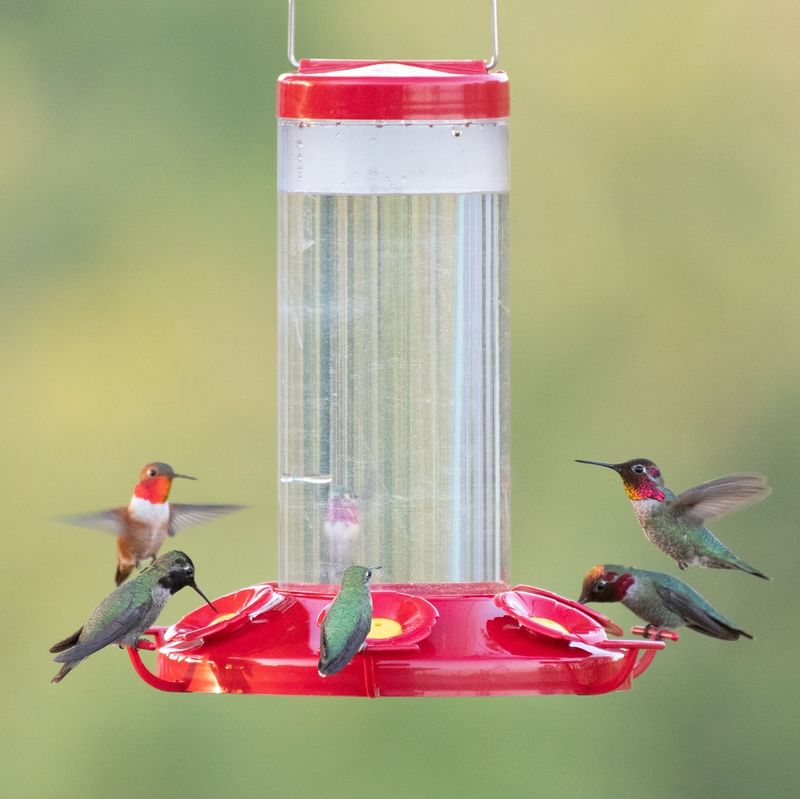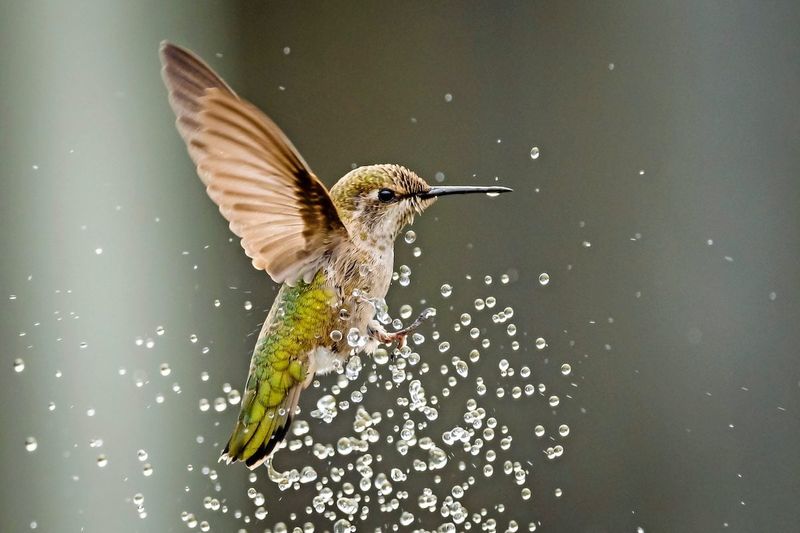Even with the best intentions, feeding hummingbirds can go south fast. A pinch too much of this or a dash too little of that, and you’re doing more harm than good. Don’t let simple slip-ups spoil the feast!
From sugar snafus to red dye disasters, here are 15 common mistakes to avoid—and natural, bird-safe alternatives that will keep your winged guests buzzing back for more.
1. Red Dye Dangers
Commercial nectar with red food coloring poses serious health risks to hummingbirds. The artificial chemicals can damage their tiny livers and kidneys over time.
Instead, make simple syrup using white sugar and water in a 1:4 ratio. The natural solution provides clean energy without harmful additives. Remember, most feeders already have red parts to attract birds – the liquid itself doesn’t need coloring!
2. Honey Hazards
Many backyard enthusiasts mistakenly use honey to sweeten hummingbird nectar. When honey ferments in warm weather, it creates a deadly fungal growth called candidiasis that infects birds’ tongues.
Plain white table sugar provides the perfect energy source that mimics natural flower nectar. The simple carbohydrates fuel their incredible metabolism safely. Never substitute honey, brown sugar, or artificial sweeteners in your homemade nectar recipe.
3. Moldy Feeders
Neglecting regular feeder cleaning creates a breeding ground for black mold. Hummingbirds drinking from contaminated feeders can develop deadly fungal tongue infections.
Establish a cleaning schedule every 2-3 days in hot weather, or weekly in cooler temperatures. Soak parts in a solution of vinegar and water (1:4 ratio), then scrub with a bottle brush. Rinse thoroughly before refilling with fresh nectar.
4. Sugar Concentration Mistakes
Getting sugar ratios wrong disrupts hummingbirds’ nutrition. Too much sugar (stronger than 1:3) can dehydrate these tiny birds, while too little won’t provide sufficient energy for their hyperactive metabolism.
Follow the golden ratio of 1 part sugar to 4 parts water. This perfectly mimics the average sugar concentration found in natural flower nectar. Measure precisely using standard measuring cups rather than eyeballing ingredients.
5. Leaving Feeders Empty
Hummingbirds remember reliable food sources and depend on them, especially during migration seasons. An empty feeder forces them to waste precious energy searching elsewhere.
Create a refill schedule that ensures continuous nectar availability. During peak seasons, check feeders daily. Consider setting calendar reminders or asking neighbors to help maintain feeders during vacations.
6. Overcooking Nectar
Boiling nectar solution too long breaks down sucrose into fructose and glucose, changing its nutritional profile. Overheated sugar can also create harmful compounds.
Simply bring water to a gentle boil, remove from heat, and then stir in sugar until completely dissolved. Allow the mixture to cool completely before filling feeders. This preserves the natural sugar structure that hummingbirds digest best.
7. Microwave Hazards
Microwaving nectar creates hot spots that can scald birds’ delicate mouths and throats if not properly cooled. Uneven heating also affects sugar distribution in the solution.
Prepare nectar on the stovetop instead, where you can control temperature more precisely. If you must use a microwave, stir thoroughly between short heating intervals and allow extra cooling time before filling feeders.
8. Sunlight Exposure
Placing feeders in direct sunlight speeds up nectar fermentation and growth of harmful bacteria. The hot sugar solution can spoil within hours on warm days.
Hang feeders in partially shaded areas that still offer visibility and safety from predators. Morning sun with afternoon shade provides an ideal balance. Consider locations under eaves or dappled tree cover where temperatures remain moderate throughout the day.
9. Ignoring Seasonal Needs
Many hummingbird enthusiasts maintain the same feeding routine year-round, missing crucial opportunities to support migration. Birds need extra energy during spring and fall journeys.
Increase feeder numbers and nectar concentration slightly (1:3 ratio) during migration seasons. Keep feeders full later in fall than you might expect – you could be helping late migrators or providing for year-round residents in milder climates.
10. Using Pesticides Nearby
Chemical pesticides sprayed near feeders or on garden plants can contaminate nectar and poison hummingbirds. These toxins accumulate in their tiny bodies with devastating effects.
Create a pesticide-free zone around feeding areas. Combat garden pests naturally using companion planting, beneficial insects, or organic solutions like neem oil. Consider hand-picking pests from plants rather than spraying chemicals.
11. Refrigerator Storage Problems
Storing extra nectar improperly leads to contamination or fermentation. Many people keep nectar too long or in containers that retain bacteria.
Use clean glass jars with tight-fitting lids for excess nectar. Label with preparation date and discard after 5-7 days, even if refrigerated. Never top off old nectar with fresh – empty and clean feeders completely each time.
12. Missing Natural Alternatives
Relying solely on feeders deprives hummingbirds of natural nectar sources that provide essential nutrients. Sugar water alone lacks amino acids, minerals, and other compounds found in flowers.
Plant native flowering species like bee balm, cardinal flower, or trumpet vine. Create a staggered blooming schedule in your garden to provide natural nectar throughout the season. Feeders should supplement, not replace, these natural food sources.
13. Ant Invasion Solutions
Fighting ants with chemical repellents near feeders endangers hummingbirds. Many people use petroleum jelly on poles, which can mat birds’ feathers if they contact it.
Install proper ant moats filled with plain water above feeders. These simple barriers prevent ants from reaching the nectar. Clean and refill moats regularly to prevent mosquito breeding. Never use oils, insecticides, or sticky substances that could harm the birds.
14. Feeder Design Flaws
Choosing decorative but impractical feeders can frustrate hummingbirds and waste nectar. Poorly designed feeders leak, clog easily, or have ports too small for comfortable feeding.
Select feeders with proper flower-shaped ports sized for hummingbird bills. Look for models that disassemble completely for thorough cleaning. Red base or accents will attract birds without needing dyed nectar. Avoid feeders with yellow components, which attract wasps.
15. Limiting Water Sources
Many hummingbird enthusiasts forget these birds need water for bathing, not just nectar for energy. Proper feather maintenance requires regular bathing opportunities.
Add a misting fountain or shallow moving water feature to your yard. Hummingbirds love flying through gentle spray or hovering over rippling water. A simple solar-powered bubbler in a shallow dish creates the perfect bathing spot that keeps these tiny birds clean and healthy.

